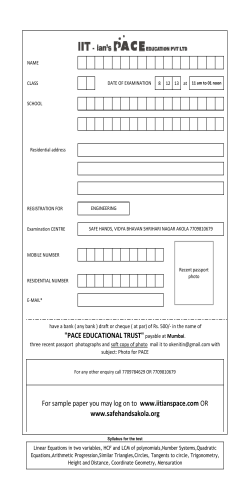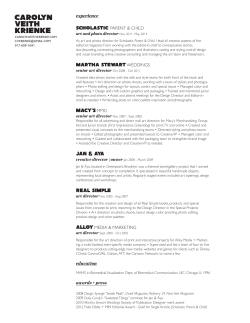
Fisiología Vegetal
Fisiología Vegetal Bibliografía Plant Physiology – L. Taiz and E. Zeiger. Fundamentos de Fisiología Vegetal – J. Azcón-Bieto y M.Talón Material de apoyo Repartidos y protocolos para los prácticos en el Subespacio. Reviews y papers. Otros Otras Referencias: Plant Physiology // The Plant Cell Plant Journal // Plant Molecular Biology Annual Review of Plant Biology Trends of Plant Science Journal of Experimental Botany Crop Science Fisiología Vegetal “la Fisiología Vegetal es el estudio de los componentes de los seres vivos (las plantas) y sus interacciones.” E. Zeiger. Concepto de Fisiología Vegetal Ascón-Bieto y Talón (2008) “Es la ciencia que estudia como funcionan las plantas, es decir, qué es lo que las mantiene vivas… el aspecto más importante no es el cúmulo de procesos físicos y químicos en cada punto de la planta y en cada momento de su programa de desarrollo, sino como se integran dichos procesos en el espacio y en el tiempo y como los modula el medio para llevar a buen término el desarrollo de la planta.” Generación y Asimilación de conocimiento Seguridad Herramientas Responsabilidad Social Conocimiento Tecnología Fisiología Vegetal Bioseguridad Herramientas Monitoreo ambiental Biodiversidad Biotecnología Plants, like most animals, are multicellular eukaryotes Bacteria Archaea Fungi Animals Plants Common ancestors Photo credits: Public Health Image Library; NASA; © Dave Powell, USDA Forest Service; tom donald Plants are diverse Grasses Ferns Flowering Plants Club mosses Seed Plants Conebearing plants Vascular Plants Plants have evolved the ability to thrive in diverse land habitats Mosses Liverworts Land Plants Broadleafed plants Green algae Images courtesy tom donald Plants make us happy People at work who can see plants report significantly greater job satisfaction than those who can’t. Dravigne, A., Waliczek, T.M., Lineberger, R.D., Zajicek, J.M. (2008) The effect of live plants and window views of green spaces on employee perceptions of job satisfaction. HortScience 43: 183–187. Photo credit: tom donald Plants are amazing living organisms Largest organism (> 100m) Largest flower (~ 1m) Longest living (~ 5000 years) Photo credits: ma_suska; Bradluke22; Stan Shebs The world population grows and grows ... The world population is expected to triple between 1950 (2.5 billion) and 2020 (7.5 billion) The world population grows and grows ... A major objective of plant science is to increase food production; current estimates indicate that we need to increase production by 70% in the next 40 years. We could not live without plants •Plants produce most of the oxygen we breathe. •Plants produce most of the chemically stored energy we consume as food and burn for fuel. •Plants produce an amazing assortment of useful chemicals. Eventos históricos Interés humano Theoprhastus (300 AC) Microscopio (1600) 1600-1800s Los microrganismos son consecuencia de la enfermedad y no la causa Julius von Sachs, “Lehrbuch der Botanik” 1840s Potato Late Blight. Epidemia en Europa. A. de Bary (1861-1863) Late blight (Phytophtora infestans) Pared Celular Plasmodesmos Sclerid or stone cell Pyrus communis Pared Celular Vacuola Vacuola Puede llegar a ocupar el 80 o 90% del volumen celular Se desarrolla a partir pequeñas provacuolas que luego se fusionan Funciones: Reserva de iones inorgánicos (NO3-, Cl-) y de iones orgánicos (malato, oxalato) Reserva de agua Ricas en enzimas hidrolíticas Contiene sustancias toxicas Contiene metabolitos secundarios útiles para defensa. Regulación osmótica, Liberación de compuestos tóxicos vegetales Detoxificación de xenobióticos Otras Mitosis-Citokinesis profase Prometafasemetafase Anafase Telofasecitoquinésis temprana (Haemanthus katherinae) Luz Onda electromagnética que consiste de campos eléctricos y magnéticos que oscilan perpendicularmente cada uno con respecto al otro y en dirección de la propagación de la luz. (v=3x108 m s-1). Radiación electromagnética El espectro de la radiación electromagnética y la energía de fotones en el rango visible del espectro. Un einstein =6 x 1023 fotones Membrana externa interna Grana estroma Tilacoides Almidón Grana Tilacoides Espectro de absorción de pigmentos fotosintéticos Espectro de absorción de pigmentos fotosintéticos Absorción de la Luz en cloroplastos Transporte electrónico en tilacoides Ribulosa bifosfato carboxilasa/oxigenasa RUBISCO A model for the structure of rubisco in chloroplasts from higher plants. Rubisco consists of 8 large (L) and 8 small (S) subunits arranged as 4 dimers. Small subunits are shown in red (only four of the small subunits are seen), large subunits are shown in blue and green, in order to show the boundaries of the dimers. (From Malkin and Niyogi 2000.) Asimilación de Carbono en plantas C3 Ciclo de Calvin 1950s Calvin, Benson y Bassham Fase I carboxilacion Fase II reducción Fase III regeneración reductive pentose phosphate cycle Ciclo fotosintético de reducción de carbono (CFRC) Chlorella sp Movimientos de la hoja hacia la intensidad lumínica The Kyoto mechanisms Under the Treaty, countries must meet their targets primarily through national measures. However, the Kyoto Protocol offers them an additional means of meeting their targets by way of three market-based mechanisms. The Kyoto mechanisms are: Emissions trading – known as “the carbon market" Clean development mechanism (CDM) Joint implementation (JI). The mechanisms help stimulate green investment and help Parties meet their emission targets in a cost-effective way. http://unfccc.int/kyoto_protocol/items/2830.php Flooding and aerenchyma Respuestas fotosintéticas a la temperatura La fotosíntesis exhibe fuerte dependencia de la temperatura en concentraciones saturantes de CO2 Fertilizer is an energy-demanding limiting resource •Crops need fertilizer – potassium, phosphate, nitrogen, and other nutrients •Potassium and phosphate are non-renewable, mined resources •Synthesis of nitrogen fertilizers requires huge amounts of energy Photo credits: Mining Top News; Library of Congress, Prints & Photographs Division, FSA-OWI Collection, LC-USW361-374 Agricultural fertilizer use is a considerable source of environmental pollution Fertilizer run-off causes dead zones, algal blooms that then decay, reducing oxygen levels in the water and making animal life impossible Photo courtesy of NASA/Goddard Space Flight Center Scientific Visualization Studio Right now, two serious diseases threaten the world’s food supply •Phytophthora infestans, cause of potato late blight, has re-emerged as a threat. •Puccinia graminis tritici, the wheat stem rust fungus, has developed into a highly aggressive form. Photo credits: www.news.cornell.edu; www.fao.org Genetically biofortified foods Iron-enriched rice Vitamin A–enriched rice Wild-type (top) and antioxidant-enriched tomatoes Photo credits: Golden Rice Humanitarian Board © 2007; Credit: ETH Zurich / Christof Sautter; Reprinted by permission from Macmillan Publishers, Ltd: Butelli, E., et al., Nature Biotechnology 26, 1301 - 1308 copyright (2008). Plants produce hundreds of compounds we use as medicines or drugs •Willow (Salix) bark as a source of aspirin (acetylsalicylic acid) •Foxglove (Digitalis purpurea) as a source of digitalis (treatment for cardiac problems) •Pacific yew (Taxus brevifolia) as a source of taxol (treatment for cancer) •Coffee (Coffea arabica) and tea (Camellia sinensis) as sources of caffeine (stimulant) Plants can make safe and inexpensive edible vaccines and antibodies OR ? Plants can be a source of biodiesel Biodiesel produced from rape, algae and soybeans are replacing petroleum-derived diesel. Image sources: Tilo Hauke, University of Minnesota, Iowa State University Extension. Plants provide fibers for paper and fabric Cotton is being bred for increased pest resistance and better fiber production. Photo credits: Chen Lab; IFPC Plants can be sources of biorenewable and biodegradable resources Energy from sunlight Scientists are investigating cost-effective ways to convert plants into plastics. Photo Illustration courtesy S. Long Lab, University of Illinois, 2006 Why study plants? Studying plants increases our knowledge about life in general and helps us to work with them to keep us fed, healthy, sheltered, clothed, and happy. PPhys August 2012 On the Cover: Functional genomics tools for maize (Zea mays) PPhys September 2012 PPhys October 2012 On the Cover: Wheat (Triticum aestivum) Barley stripe mosaic virus (BSMV)-derived functional genomic tools, Virusinduced gene silencing (VIGS) On the Cover: The cover image, entitled “The shape of roots to come, “ was composed by Alexander Bucksch from the computed binary image masks of cowpea roots. The image conveys the diversity of root shapes of an emerging crop and the increasingly important algorithmic advances enabled by computational plant sciences. As described in Bucksch et al. (pp. 470–486), computational analysis of root systems excavated and imaged in field conditions enabled the phenotypic differentiation of 188 cowpea genotypes.
© Copyright 2025









